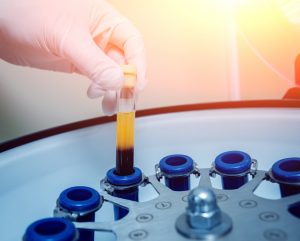Platelet rich plasma (PRP) is generating a lot of buzz lately. It’s been widely used to treat joint, tendon, and tissue injuries among pro athletes and weekend warriors. But a new application is gaining steam.
It’s being touted as a possible cure-all for baldness, and an all-natural alternative to facial recontouring, lip enhancement and even vaginal rejuvenation. Growing numbers of cosmetic doctors are offering PRP for its aesthetic benefits and many a celebrity has professed their undying love for it, including Kim Kardashian, Bar Rafaeli, Tiger Woods and Angelina Jolie.
But what exactly is PRP and can it possibly live up to all the hype?

PRP injections can be used in place of Botox or fillers — and possibly some types of energy-based skin rejuvenation to fill in lines and folds, and stimulate collagen. It’s collagen that gives our skin the supple, elastic properties of youth, and we know that our natural supply dips with age. PRP can supplement this dip to help sustain those youthful aesthetics we all want to cling to.
For hair loss, PRP serves as something of a fertilizer in the sense that it’s helping to spur hair growth. It can be used alone or with other hair restoration treatments such as transplants or topicals.
Some doctors are using PRP with another red-hot treatment called microneedling. During microneedling, your doctor makes tiny pinpricks on your face using a pen-like device. These “wounds” help to kick start the body’s own natural healing process which in turn spurs collagen production. Microneedling creates small channels and PRP is then slathered on the face so it can go where it’s needed most to further amp up collagen production from within.
Some people may be gravitating to the “natural aspect” of PRP because the idea of injecting a foreign substance into their body is not appealing. With PRP injections, there is no risk of allergic reaction because it is created from your own blood. In general, results appear gradually over time and can last as long as 18 months. Although keep in mind that several treatments may be needed. The cost of PRP is comparable to off-the-shelf injectables like Botox and Juvederm.
Many studies assessing PRP and its potential cosmetic uses are now underway. Until these studies are completed, the jury is still out, but it looks like it will be a unanimous vote in favor of its aesthetic applications.
If you are interested in PRP, consult with a board-certified plastic surgeon or dermatologist who has experience with this innovative procedure.

